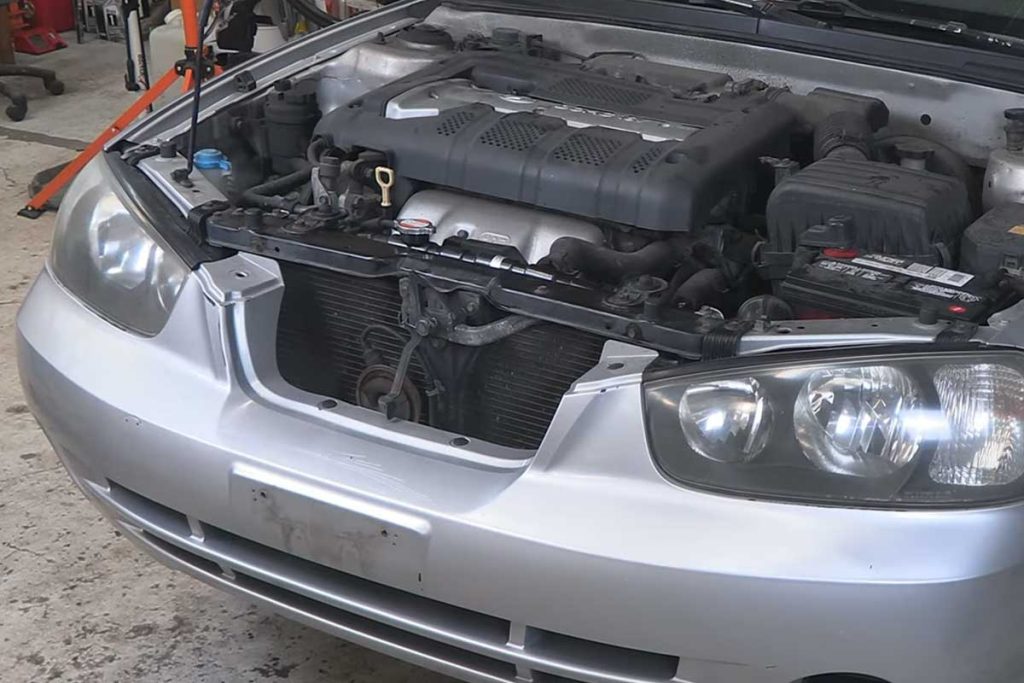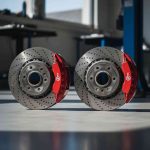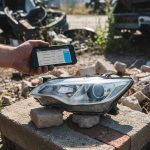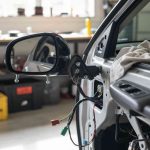If you want to save money on car repairs, buying a used car radiator from a salvage yard or junkyard is a great way to keep your car’s cooling system working well without spending too much. This helps you save money and also supports recycling, which reduces the need for new metal parts. On U-Pull-It.com, you can enter your zip code to quickly find nearby junkyards that have affordable radiators available. This makes it easy to find the closest options for your needs.
In this guide, we’ll show you how to find the right radiator and how to safely remove it. We will also talk about the pros and cons of buying a used radiator and what signs of damage or corrosion to look for when choosing a good used car radiator. We’ll also explain how junk cars end up in salvage yards, giving you an idea of how recycling works in the car world.
Why Buy a Salvage Car Radiator?
Big Savings: A new radiator can cost between $300 to $1,000 or more, depending on your car’s make and model. Buying a used radiator from a junkyard could save you up to 70-80% compared to buying a new one.
Good for the Environment: Reusing car parts like radiators, cooling cores, and other used auto parts helps save energy and resources that would be needed to make new parts, which is better for the environment.
Quick Fix for Radiator Problems: If your radiator is leaking or your car is overheating, getting one from a salvage yard can be a quick and cheap way to get your car running again.
Finding the Right Radiator at a Junkyard
Check Compatibility and Part Numbers:
- Make sure to check your Vehicle Identification Number (VIN) and specific part numbers to make sure the radiator is an exact match. This will help avoid problems with fitting and performance.
- Refer to your vehicle’s service manual to find out what type of radiator is needed.
To find the right radiator, follow these steps:
- Identify Your Vehicle’s Make, Model, and Year
- This will help make sure the radiator you buy is the right one for your car’s engine and fits well without issues. Some radiators can work in different models, giving you more options.
- Use an Interchange System
- Many junkyards have computer systems that help find parts that work with your car, even if they aren’t an exact match. This can help you find alternatives that fit your car.
- Call Ahead
- Use U-Pull-It’s junkyard directory to call local junkyards and check if they have what you need. Be sure to ask about the condition of the part and the price to make sure it meets your needs. This can save you time and make sure the part is in stock.
- Bring Your Vehicle Information
- When visiting, bring your car’s details, like the make, model, and year. This information will help you find the right radiator.
Visiting a Junkyard to Remove a Radiator
Testing the Radiator Before Purchase:
- On-site Pressure Testing: If possible, perform a simple pressure test on the radiator to check for leaks before buying.
- Visual Inspection Details: Look closely at the tanks, seams, and inlet/outlet ports to make sure there is no visible damage or cracks.
Many salvage yards are “U-Pull-It,” which means you need to bring your own tools and remove the part yourself. In these types of yards, you get to pick the part you need directly from the cars available, which can save you money. Here are some tips to safely remove the radiator:
- Dress Properly: Wear old clothes, long sleeves, and closed-toe shoes. Safety gear like gloves and safety glasses is also a good idea.
- Bring Your Own Tools: Junkyards usually don’t supply tools. To remove a radiator, you’ll need:
- Socket set and ratchet
- Screwdrivers (flathead and Phillips)
- Pliers and a coolant drain pan
- Flashlight for dark areas
- Follow Safety Rules: Junkyards have rules for everyone’s safety. Be sure to follow them, like not smoking or bringing small kids into the yard.
Checklist Table: Tools for Radiator Removal
| Tool | Purpose |
|---|---|
| Socket set & ratchet | Removing mounting bolts |
| Screwdrivers | Detaching clamps and hoses |
| Pliers | Handling small fasteners |
| Coolant drain pan | Catching any extra coolant |
| Gloves & Glasses | Protecting hands and eyes |
Warranty Coverage and Important Considerations
Handling and Disposal of Coolant:
- Environmental Safety: Always properly drain and dispose of any leftover coolant. Coolant is toxic and must be handled with care to avoid harming the environment.
- Local Regulations: Check local laws regarding coolant disposal to make sure you comply with regulations.
Warranties: Some junkyards offer warranties on parts, usually for 30 to 90 days. Ask about the warranty details and make sure you understand if you can return the part if it doesn’t work.
Inspect the Radiator: Check for damage, leaks, rust, or corrosion or stripped paint. Make sure the radiator doesn’t show any major signs of corrosion or have a bad radiator core. Here’s what to look for:
- Rust or Stripped Paint: Shows that the radiator has some wear and tear.
- Cooling Fins: Make sure the cooling fins are not bent or broken, as this can affect how well the radiator works.
- Leaks: Look for green or orange residue, which could mean there is or was a leak.
How Junk Cars Get to Salvage Yards
Most cars in junkyards get there through the salvage process. Cars that have been in accidents, are too costly to repair, or are just too old often end up in salvage yards. This allows car owners to recover some value and avoid storage fees.
Types of Vehicles Commonly Salvaged
- Accident-Damaged Cars: These cars may still have many good parts, like radiators, that can be reused.
- End-of-Life Vehicles: Cars that are too old or worn out but still have parts that work well.
- Hurricane or Flood Vehicles: Cars damaged by storms but with salvageable parts. Junkyards across the South brace for a surge of hurricane-damaged vehicles.
What Does a Car Radiator Do?
Importance of a Working Radiator
A vehicle’s radiator keeps the engine cool by transferring heat away from the engine. It does this by circulating antifreeze, also known as coolant, through the cooling cores, which allows heat from the engine to be released. Without a working radiator, your engine will overheat, which can lead to serious damage and costly repairs. A well-maintained radiator is very important to keep your engine cool and your car running well.
Can You Use a Radiator from a Different Vehicle?
When buying used radiators, you may wonder if a radiator from a different vehicle can work in your car. The answer depends on compatibility. If you’re looking for a replacement, the best choice is to use an OEM radiator, which is specifically made for your vehicle’s engine. OEM parts are built to match your car’s original specifications, making them a reliable option that fits properly. Aftermarket radiators, on the other hand, may not fit as well or may not provide the same level of cooling. It’s important to know what to look for and to check if the radiator fits your car’s needs.
OEM Radiators vs. Aftermarket Radiators
- OEM Radiators: These are quality used car parts that match the original parts that came with your car. They fit perfectly and offer the best performance. If you’re buying used, finding a quality OEM radiator will help keep your car back on the road without overheating issues. OEM radiators also often come with a warranty, giving you extra peace of mind.
- Aftermarket Radiators: These are made by other manufacturers and may not always match the quality of OEM parts. While they can be cheaper, they may not fit as well, and they may not keep the engine temperature regulated as effectively as an OEM radiator. It’s always a good idea to look for signs of corrosion or stripped paint when buying an aftermarket radiator to avoid getting a bad radiator.
What Types of Materials Are Car Radiators Made Of?
Car radiators can be made of different materials, and the material affects how they work:
- Aluminum: Most modern radiators are made of aluminum because it is lightweight and does a good job of transferring heat. Aluminum cooling cores are popular because they help keep the engine temperature in check.
- Copper and Brass: Older radiators are often made of copper or brass. These materials also provide great cooling but are heavier. If you are buying used car parts, you may find these materials in radiators for older vehicles.
- Plastic and Aluminum Combination: Some radiators have plastic tanks with aluminum cores. They are lighter and more affordable, but they may not last as long and can develop leaks, especially if there is any corrosion or stripped paint.
When buying a used radiator, it is important to inspect the cooling cores and look for signs of wear, such as cracks or stripped paint on a radiator. A radiator that shows signs of corrosion or has a hose that looks worn out might be past its prime. Properly inspect the cooling cores for an even degree of corrosion to tell whether the radiator is in good condition.
Benefits and Risks of Buying a Used Car Radiator
Installation Tips:
- Professional Installation: If you are not comfortable with installing a radiator, consider getting a professional to help. This will prevent damage to the radiator or vehicle.
- Flushing the Cooling System: Make sure to flush the car’s cooling system before installing the used radiator to avoid contamination. Make sure the system is free of old radiator fluid, and replace the thermostat if needed to keep the engine temperature regulated.
Benefits Of Buying a High Quality Used Radiator
- Save Money: Buying used car parts, including used radiators, can save you a lot, especially since a new radiator replacement or radiator repair can be very expensive.
- Eco-Friendly: Reusing radiators helps save energy needed to make new parts, which is better for the environment.
- Quality: Junkyards often have OEM parts (original manufacturer parts), which are often better quality than cheap aftermarket parts.
Risks Of Buying a Used Radiator
- Shorter Lifespan: A used radiator may not last as long as a new one, especially if it hasn’t been well-maintained or shows signs of wear. Things like previous repairs, rust, or heavy use can all impact how long a used radiator will work well.
- Hidden Problems: If not carefully inspected, there could be hidden issues like small leaks, damage, or signs of corrosion. You may also want to check for evenly spaced cooling fins and any indication that the radiator is leaking coolant.
Frequently Asked Questions
1. Is a used radiator compatible with my vehicle?
Yes, if it matches your vehicle’s make, model, and year. Many junkyards have systems to match radiators that fit different models.
2. Can I return a used radiator if it doesn’t work?
Most good junkyards offer warranties of 30 to 90 days so you can return the radiator if it’s faulty. Always get the warranty details in writing.
3. How can I tell if a used radiator is still good?
Look for rust, leaking coolant, bent cooling fins, and stripped paint as signs that your radiator may be compromised. A well-kept radiator is more likely to work properly.
4. How do junkyards get their inventory of radiators?
Cars end up in junkyards after accidents, reaching the end of their life, or being damaged by floods. Junkyards then check and remove useful parts.
5. Can I get a pressure test done before buying the radiator?
Some junkyards offer this service. It’s best to call ahead and ask if they can do a pressure test on the radiator.
Get Your Car Radiator Today
Negotiating Prices and Hidden Costs:
- Entry Fees: Some junkyards may charge an entry fee, so keep this in mind when budgeting.
- Core Charges: Some yards may have core charges or require you to bring in your old radiator in exchange.
- Price Negotiation: You can often negotiate a lower price if the radiator shows signs of wear or damage.
Save big on car repairs by getting a quality used car radiator from your local salvage yard. Visit U-Pull-It.com to find the nearest junkyard with the parts you need.
Find Quality Used Car Seats at Local Junkyards | Sell Your Junk Car for $500 Cash | The Best Days to Hit the Junkyard




